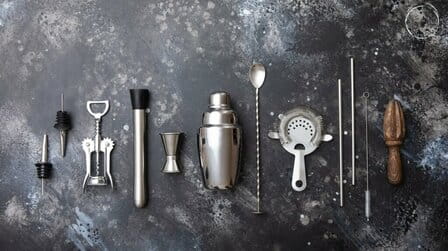Beer is a beloved beverage for many, but like any food or drink, it has a shelf life. The fridge can help extend the lifespan of beer, but just how long does beer last when refrigerated? Here's a close look at how to tell if beer has gone bad and how long you can expect beer to stay fresh in the fridge.
Outline: How Long Does Beer Last In The Fridge?
Beer can last from 3-6 months beyond its "best by" date when stored in the fridge, but there are some factors that can shorten its shelf life. Here are some key points on maximizing beer freshness:
Beer Types
- The ingredients and alcohol content affect how long different beer styles last. Higher alcohol beers like IPAs have more longevity.
- Delicate beers like pilsners are more perishable and tend to go stale faster.

Storage Conditions
- Keeping beer cold in the fridge (35-40°F) helps slow deterioration and hold flavors.
- Any exposure to heat, light, or air speeds up spoilage. Keep beer away from the fridge door.
Packaging
- Bottles and cans prevent oxygen exposure better than draft beer. Draught beer lasts only a few days.
- Clear or green glass provides little UV protection. Brown bottles help block light.
- Old, cracked caps or compromised cans can introduce air and bacteria.
Freshness Signs
- Cloudiness, off-aromas, sourness, or faded carbonation are signs beer may be past its prime.
- Changes in appearance, texture, or taste over time indicate declining freshness.
Date Labels

- "Best by" dates are simply freshness guidelines, not safety cut-offs.
- Focus on how the beer looks, smells, and tastes rather than the date.
How to Tell When Beer Is Bad
It's normal for beer to slowly change in taste and aroma as it ages in the fridge, but there are some clear signs that indicate it has spoiled and should be discarded. Learn more about why beer can suddenly taste bad.
Sour, Vinegary Smell
An unpleasant sour or vinegar-like smell means acetic acid bacteria have infiltrated the beer. This causes a vinegar spoilage that makes the beer unpalatable.
Skunky Aroma
When beer is exposed to UV light, the hops can take on a potent "skunky" smell. This doesn't necessarily mean the beer is unsafe, but it will taste very unpleasant.

Mold Growth
If you see furry mold growing in the beer itself or around the rim or cap, discard the beer. Mold can impart bad flavors and may be unhealthy to ingest.
Curdled Texture
Over time, beer can develop a curdled, chunky texture from proteins coagulating. This is a signal the beer is past its prime and becoming undrinkable.
Flat Taste
If the carbonation is totally gone and beer tastes flat, stale, or watery, it has likely oxidized and should not be consumed.

Tips for Maximizing Beer Freshness
Follow these storage tips to help keep refrigerated beer tasting its best for as long as possible:
- Store beer in the back of the fridge away from the door to minimize temperature fluctuations.
- Keep beer in its original box or wrap it in foil to limit light exposure.
- Once opened, re-cap bottles or clamp cans tightly closed between servings.
- Clean beer taps and draft lines regularly if dispensing draught beer at home.
- Buy smaller size bottles or cans you can finish soon after opening.
- When possible, opt for packages that block UV rays like brown bottles.
- Don't let beer sit for longer than a few weeks, even if refrigerated.
- Check taste occasionally and drink within several days if you notice any stale or "off" flavors.
Pros and Cons of Refrigerating Beer

Proper fridge storage helps beer retain quality and last longer, but it can't keep beer fresh indefinitely. Here are some key pros and cons:
Pros
- Slows down aging process and oxidation reactions
- Inhibits microbial growth at cool temps
- Preserves carbonation and retains head
- Maintains hop flavors and aroma
Cons
- Eventual staling still occurs over months
- Repeated fridge door opening affects stability
- Refrigeration can mute certain flavors
- Condensation introduces water that dilutes flavor
- Bottles still slowly let in oxygen over time
Alternatives to Refrigeration
While refrigeration is best for maintaining beer quality once opened, there are some alternatives for storing unopened beer:
Root Cellar
A root cellar with temperatures around 45-60°F can effectively mimic fridge conditions. This uses the earth's natural cooling insulation.
Cool Basement
An unfinished basement that stays cool can substitute for refrigeration, provided the beer is kept away from heat sources.
Temperature-Controlled Room
A wine refrigerator or cellar with customized temperature controls can allow long-term beer storage without needing to refrigerate all bottles.

Insulated Cooler
Packing beer into a quality insulated cooler with ice packs can keep beer chilled for transport, temporary storage, or outdoor activities.
Freezer
Freezing beer is not recommended, but it can briefly extend shelf life if done carefully to avoid freezing and exploding bottles.
Conclusion
When stored properly in the fridge, most beers can maintain quality and taste great for 3-6 months past their "best by" date before slowly declining in aroma, flavor, and carbonation. Keeping beer cold, minimizing light and air exposure, and drinking shortly after opening are key to extending its fridge life span. With proper refrigerated storage and care, you can keep enjoying your favorite beers while at their peak of fresh-tasting quality.












